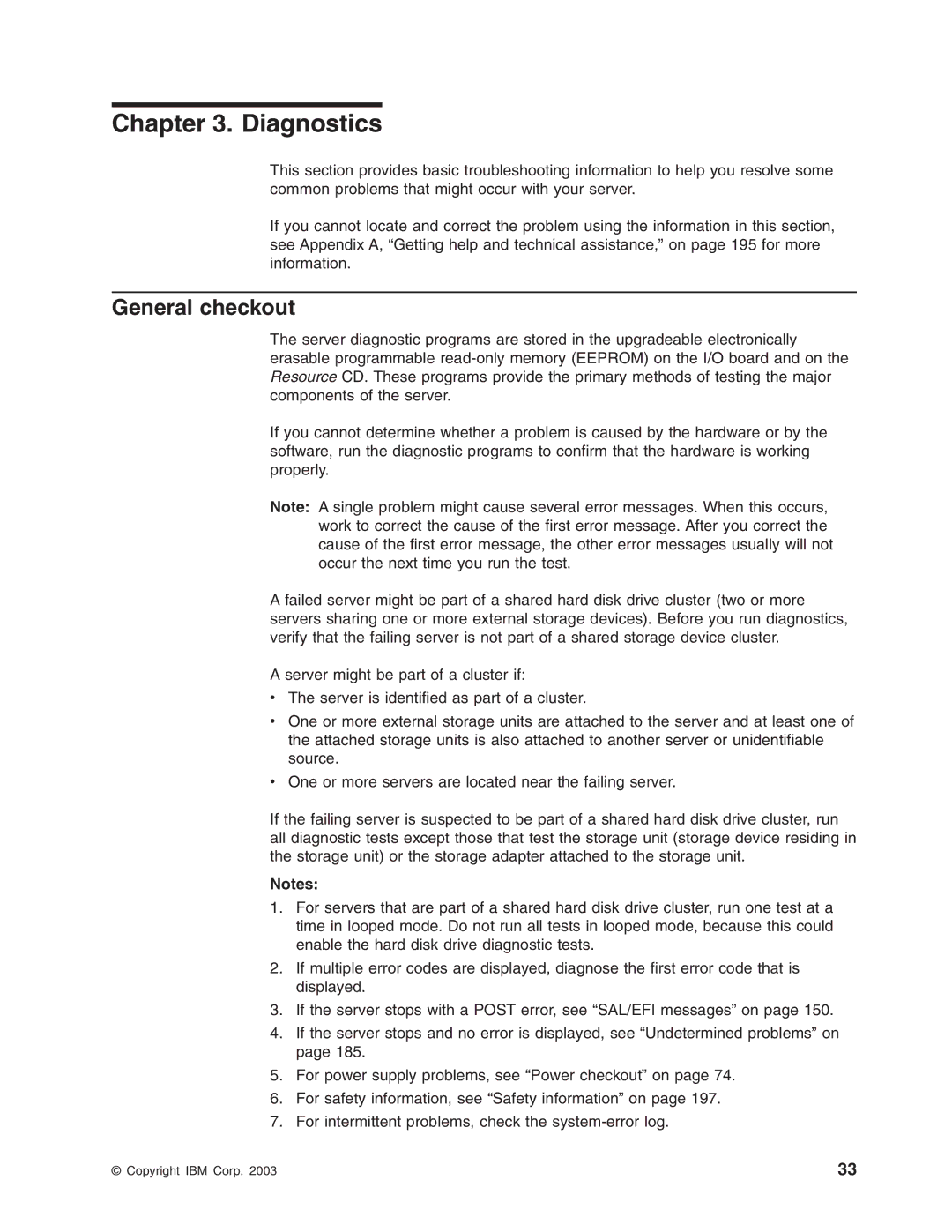
Chapter 3. Diagnostics
This section provides basic troubleshooting information to help you resolve some common problems that might occur with your server.
If you cannot locate and correct the problem using the information in this section, see Appendix A, “Getting help and technical assistance,” on page 195 for more information.
General checkout
The server diagnostic programs are stored in the upgradeable electronically erasable programmable
If you cannot determine whether a problem is caused by the hardware or by the software, run the diagnostic programs to confirm that the hardware is working properly.
Note: A single problem might cause several error messages. When this occurs, work to correct the cause of the first error message. After you correct the cause of the first error message, the other error messages usually will not occur the next time you run the test.
A failed server might be part of a shared hard disk drive cluster (two or more servers sharing one or more external storage devices). Before you run diagnostics, verify that the failing server is not part of a shared storage device cluster.
A server might be part of a cluster if:
vThe server is identified as part of a cluster.
vOne or more external storage units are attached to the server and at least one of the attached storage units is also attached to another server or unidentifiable source.
vOne or more servers are located near the failing server.
If the failing server is suspected to be part of a shared hard disk drive cluster, run all diagnostic tests except those that test the storage unit (storage device residing in the storage unit) or the storage adapter attached to the storage unit.
Notes:
1.For servers that are part of a shared hard disk drive cluster, run one test at a time in looped mode. Do not run all tests in looped mode, because this could enable the hard disk drive diagnostic tests.
2.If multiple error codes are displayed, diagnose the first error code that is displayed.
3.If the server stops with a POST error, see “SAL/EFI messages” on page 150.
4.If the server stops and no error is displayed, see “Undetermined problems” on page 185.
5.For power supply problems, see “Power checkout” on page 74.
6.For safety information, see “Safety information” on page 197.
7.For intermittent problems, check the
© Copyright IBM Corp. 2003 | 33 |
